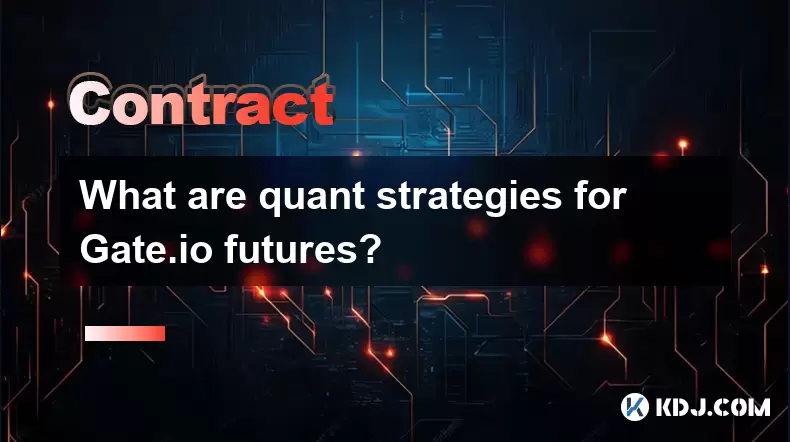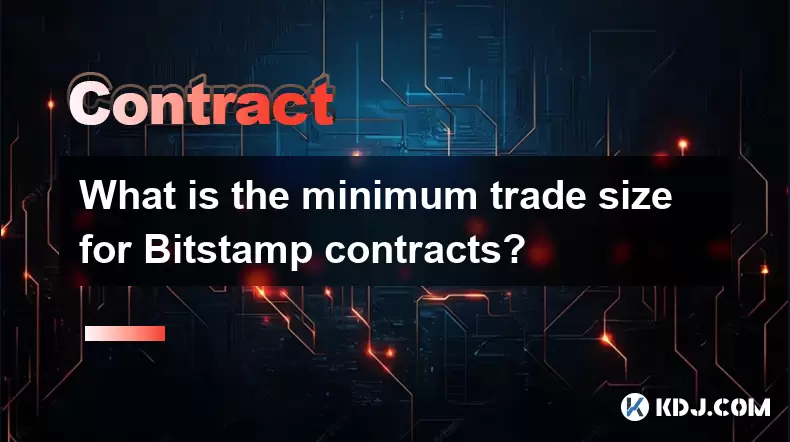-
 Bitcoin
Bitcoin $118600
-1.19% -
 Ethereum
Ethereum $3633
-2.99% -
 XRP
XRP $3.191
-10.14% -
 Tether USDt
Tether USDt $1.000
0.01% -
 BNB
BNB $776.1
-1.34% -
 Solana
Solana $189.7
-7.51% -
 USDC
USDC $0.0000
0.02% -
 Dogecoin
Dogecoin $0.2413
-10.49% -
 TRON
TRON $0.3099
-1.92% -
 Cardano
Cardano $0.8182
-9.31% -
 Hyperliquid
Hyperliquid $43.77
-4.82% -
 Stellar
Stellar $0.4286
-9.27% -
 Sui
Sui $3.717
-7.35% -
 Chainlink
Chainlink $18.22
-7.31% -
 Hedera
Hedera $0.2465
-9.91% -
 Bitcoin Cash
Bitcoin Cash $512.4
-2.64% -
 Avalanche
Avalanche $23.98
-6.82% -
 Litecoin
Litecoin $112.5
-5.53% -
 UNUS SED LEO
UNUS SED LEO $8.969
-0.24% -
 Shiba Inu
Shiba Inu $0.00001388
-10.11% -
 Toncoin
Toncoin $3.194
-4.31% -
 Ethena USDe
Ethena USDe $1.001
0.00% -
 Polkadot
Polkadot $4.128
-8.96% -
 Uniswap
Uniswap $10.19
-5.28% -
 Monero
Monero $313.7
-2.80% -
 Bitget Token
Bitget Token $4.712
-2.96% -
 Dai
Dai $0.0000
0.01% -
 Pepe
Pepe $0.00001275
-9.75% -
 Aave
Aave $291.4
-6.25% -
 Bittensor
Bittensor $426.7
-5.38%
What are quant strategies for Gate.io futures?
Quantitative strategies on Gate.io futures use data-driven models to automate trading, manage risk, and exploit market inefficiencies like mean reversion or arbitrage—all executable via API with proper backtesting and risk controls.
Jul 24, 2025 at 12:14 am

Understanding Quantitative Strategies in Gate.io Futures
Quantitative strategies in Gate.io futures involve using mathematical models, statistical analysis, and algorithmic execution to make trading decisions. These strategies rely on historical and real-time market data to identify patterns, execute trades, and manage risk. Traders use programming languages like Python or specialized platforms such as QuantConnect or Freqtrade to build and backtest strategies tailored for Gate.io’s futures markets. The core idea is to remove emotional bias and automate decisions based on data-driven signals. For example, a strategy might enter a long position when a moving average crossover occurs and exit when volatility spikes beyond a threshold—all executed automatically via API integration with Gate.io.
Common Types of Quant Strategies on Gate.io
- Mean Reversion: This strategy assumes that prices will revert to their average over time. If BTC/USDT futures deviate significantly from their 20-day moving average, the model may open a short or long position expecting a return to the mean.
- Momentum Trading: Here, the system identifies assets trending upward or downward and follows the trend. For instance, if ETH/USDT shows increasing volume and price over 4-hour candles, the bot buys futures contracts.
- Arbitrage: Exploits price differences between Gate.io and other exchanges. If BTC futures are priced higher on Gate.io than Binance, the bot buys low on Binance and sells high on Gate.io (subject to transfer speed and fees).
- Statistical Arbitrage: Uses cointegration between two assets (e.g., BTC and ETH). When the spread between them widens abnormally, the system goes long on the underperforming asset and short on the outperforming one.
- Volatility Breakout: Triggers trades when price breaks past recent high or low levels. For example, if BTC futures break above yesterday’s high with volume surge, the bot enters a long position.
Each of these requires precise parameter tuning and continuous monitoring to avoid false signals.
How to Set Up a Gate.io API for Quant Trading
To automate strategies, you must connect your quant model to Gate.io via API. Follow these steps carefully: - Log into your Gate.io account and navigate to "API Management" under the profile menu.
- Click "Create API", enter a name (e.g., “QuantBot”), and enable "Spot & Futures Trading" permissions.
- Enable IP Whitelisting for security—input your server’s public IP address.
- Confirm via email or SMS to generate the API Key and Secret.
- Store both securely—never hardcode them in public repositories.
In your Python script, use the
gate-apilibrary:from gate_api import ApiClient, FuturesApi client = ApiClient(key='your_api_key', secret='your_secret') futures_api = FuturesApi(client)- Test with "Testnet" first by switching the base URL to
https://fx-api-testnet.gateio.ws/api/v4/.This setup allows your bot to fetch order books, place orders, and manage positions programmatically.
Backtesting Your Strategy on Gate.io Futures Data
Backtesting ensures your strategy would have performed well historically before risking real funds. Gate.io provides historical k-line data via its REST API. To backtest: - Use the endpoint
/futures/usdt/candlesto pull 1-minute to 1-day OHLCV data for any futures pair. Import the data into pandas using:
import pandas as pd df = pd.DataFrame(data, columns=['timestamp', 'volume', 'close', 'high', 'low', 'open']) df['timestamp'] = pd.to_datetime(df['timestamp'], unit='s')Apply your strategy logic—e.g., for a simple RSI-based strategy:
- Calculate RSI(14) using
ta.momentum.RSIIndicator(df['close']).rsi(). - Enter long when RSI < 30, exit when RSI > 70.
- Calculate RSI(14) using
- Simulate slippage (e.g., 0.1%) and trading fees (0.04% per futures trade on Gate.io).
- Measure metrics like Sharpe Ratio, max drawdown, and profit factor using
empyricalor custom functions.Accurate backtesting prevents overfitting and reveals edge degradation under real market conditions.
Risk Management in Gate.io Futures Quant Strategies
Quant strategies must include strict risk controls to survive volatile markets: - Set position sizing rules—e.g., never risk more than 2% of equity per trade.
- Implement stop-loss and take-profit levels programmatically using the
futures_api.create_order()withreduce_only=True. - Monitor open interest and funding rates via
/futures/usdt/tickersto avoid adverse funding costs in perpetual futures. - Use circuit breakers—if daily loss exceeds 5%, pause trading for 24 hours.
- Log every trade and error in a database (e.g., SQLite or PostgreSQL) for audit trails.
Failure to manage risk can lead to liquidation, especially in leveraged futures trading where 10x–100x leverage is available on Gate.io.
Frequently Asked Questions
Can I run quant strategies on Gate.io without coding?
Yes. Platforms like 3Commas or Kryll.io offer no-code bot builders that integrate with Gate.io via API. You can drag-and-drop conditions (e.g., “if RSI < 30, buy”) and deploy them directly to Gate.io futures without writing a single line of code.Does Gate.io charge extra fees for API trading?
No. Gate.io applies the same taker and maker fees for API and manual trading—0.04% for takers and 0.02% for makers in futures. Volume discounts apply if you’re in their tiered fee system.How often should I retrain my quant model for Gate.io futures?
Retrain weekly or monthly depending on strategy type. Mean-reversion models may need weekly updates due to changing volatility regimes, while momentum strategies can be retrained monthly using the latest 90 days of data.Is it safe to leave a quant bot running 24/7 on Gate.io?
It is safe if you implement kill switches, monitor logs, and test thoroughly on testnet first. Gate.io’s API is stable, but network issues or exchange maintenance can cause missed orders—always include error handling in your code.
Disclaimer:info@kdj.com
The information provided is not trading advice. kdj.com does not assume any responsibility for any investments made based on the information provided in this article. Cryptocurrencies are highly volatile and it is highly recommended that you invest with caution after thorough research!
If you believe that the content used on this website infringes your copyright, please contact us immediately (info@kdj.com) and we will delete it promptly.
- Score Big This Season with the BetMGM Bonus Code: Your Ticket to MLB Bonus Bets!
- 2025-07-24 06:50:12
- Bitcoin: From Digital Gold Rush to Evolving Asset Class
- 2025-07-24 06:50:12
- Shiba Inu's $1 Dream: Major Hurdles and Community-Driven Hope
- 2025-07-24 06:30:13
- Ethereum, Altcoins, and BlockDAG: Navigating the Crypto Landscape
- 2025-07-24 06:30:13
- Dogecoin's Resistance Retest: Parabolic Move on the Horizon?
- 2025-07-24 04:50:13
- WLFI, Vaulta Token, and Holdings: Navigating the Web3 Revolution
- 2025-07-24 05:30:13
Related knowledge

Why is my Bitstamp futures position being liquidated?
Jul 23,2025 at 11:08am
Understanding Futures Liquidation on BitstampFutures trading on Bitstamp involves borrowing funds to open leveraged positions, which amplifies both po...

Does Bitstamp offer inverse contracts?
Jul 23,2025 at 01:28pm
Understanding Inverse Contracts in Cryptocurrency TradingIn the realm of cryptocurrency derivatives, inverse contracts are a specific type of futures ...

How to find your Bitstamp futures trade history?
Jul 23,2025 at 08:07am
Understanding Bitstamp and Futures Trading AvailabilityAs of the current state of Bitstamp’s service offerings, it is critical to clarify that Bitstam...

Can I use a trailing stop on Bitstamp futures?
Jul 23,2025 at 01:42pm
Understanding Trailing Stops in Cryptocurrency TradingA trailing stop is a dynamic type of stop-loss order that adjusts automatically as the price of ...

What is the minimum trade size for Bitstamp contracts?
Jul 23,2025 at 07:14pm
Understanding Bitstamp and Its Contract OfferingsBitstamp is one of the longest-standing cryptocurrency exchanges, established in 2011, and known for ...

How to trade ETH perpetuals on Bitstamp?
Jul 23,2025 at 03:28am
Understanding ETH Perpetual ContractsETH perpetual contracts are derivative products that allow traders to speculate on the price of Ethereum without ...

Why is my Bitstamp futures position being liquidated?
Jul 23,2025 at 11:08am
Understanding Futures Liquidation on BitstampFutures trading on Bitstamp involves borrowing funds to open leveraged positions, which amplifies both po...

Does Bitstamp offer inverse contracts?
Jul 23,2025 at 01:28pm
Understanding Inverse Contracts in Cryptocurrency TradingIn the realm of cryptocurrency derivatives, inverse contracts are a specific type of futures ...

How to find your Bitstamp futures trade history?
Jul 23,2025 at 08:07am
Understanding Bitstamp and Futures Trading AvailabilityAs of the current state of Bitstamp’s service offerings, it is critical to clarify that Bitstam...

Can I use a trailing stop on Bitstamp futures?
Jul 23,2025 at 01:42pm
Understanding Trailing Stops in Cryptocurrency TradingA trailing stop is a dynamic type of stop-loss order that adjusts automatically as the price of ...

What is the minimum trade size for Bitstamp contracts?
Jul 23,2025 at 07:14pm
Understanding Bitstamp and Its Contract OfferingsBitstamp is one of the longest-standing cryptocurrency exchanges, established in 2011, and known for ...

How to trade ETH perpetuals on Bitstamp?
Jul 23,2025 at 03:28am
Understanding ETH Perpetual ContractsETH perpetual contracts are derivative products that allow traders to speculate on the price of Ethereum without ...
See all articles

























































































